
— Liam Murphy
Tesla’s Model 3 has earned an iconic reputation in the time since its 2019 introduction to Australia.
The electric sedan almost single-handedly forged the brand’s reputation here, providing the masses with a more affordable alternative to the marque’s larger (and now unavailable) Model S and Model X, all without sacrificing tech or performance.
Following the current generation’s six-year global cycle, Tesla has reaffirmed its confidence in the Model 3 – and more importantly, its carryover powertrain – by introducing a facelifted version with a handful of updates focused on comfort and refinement.
The 2024 Tesla Model 3 line-up is reduced to two, with the Performance variant dropped (for the foreseeable future) in favour of just Rear-Wheel Drive (RWD) and All-Wheel Drive (AWD) versions.
The entry level RWD – powered by a single electric motor and ~62kWh battery – starts from $61,900, with the dual motor, ~82kWh battery-equipped AWD landing at $71,900. These figures do not include Tesla’s additional $400 order and $1400 delivery fees.
Despite using carryover battery packs and electric motors, driving range has been increased from 491km to 513km in RWD, and 602km to 629km in AWD thanks to redesigned front and rear bumpers which reduce aerodynamic drag.
Adding 25mm to the Model 3’s length almost entirely ahead of the steering wheels, the new-style bumpers are also joined by redesigned head and tail lights – which are a bit more Model S up front and Model X in the rear – as well as new wheel options.
While the previous Model 3 was not exactly show-stopping in the looks department, it was tasteful and inoffensive. The 2024 update is not unattractive, but has given away some visual presence in the pursuit of being as slippery as possible.
Overall build quality feels more solid inside and out than the previous version, with a noticeable steer towards premium. Increased sound deadening and acoustic-rated rear glass reduce cabin noise by a claimed 20–30 per cent, and are complemented by revised suspension components with an emphasis on improving noise, vibration and harshness (NVH).
The centre touchscreen has grown slightly to 15.4 inches in diameter, joined by an additional 8.0-inch touchscreen in the back of the centre console for rear-seated passengers. Power adjustable front seats now feature perforated synthetic leather with, for the first time, cooling.
A stalk-less design has also been introduced, with indicators now operated by buttons on the steering wheel and gear selections made on the touchscreen.
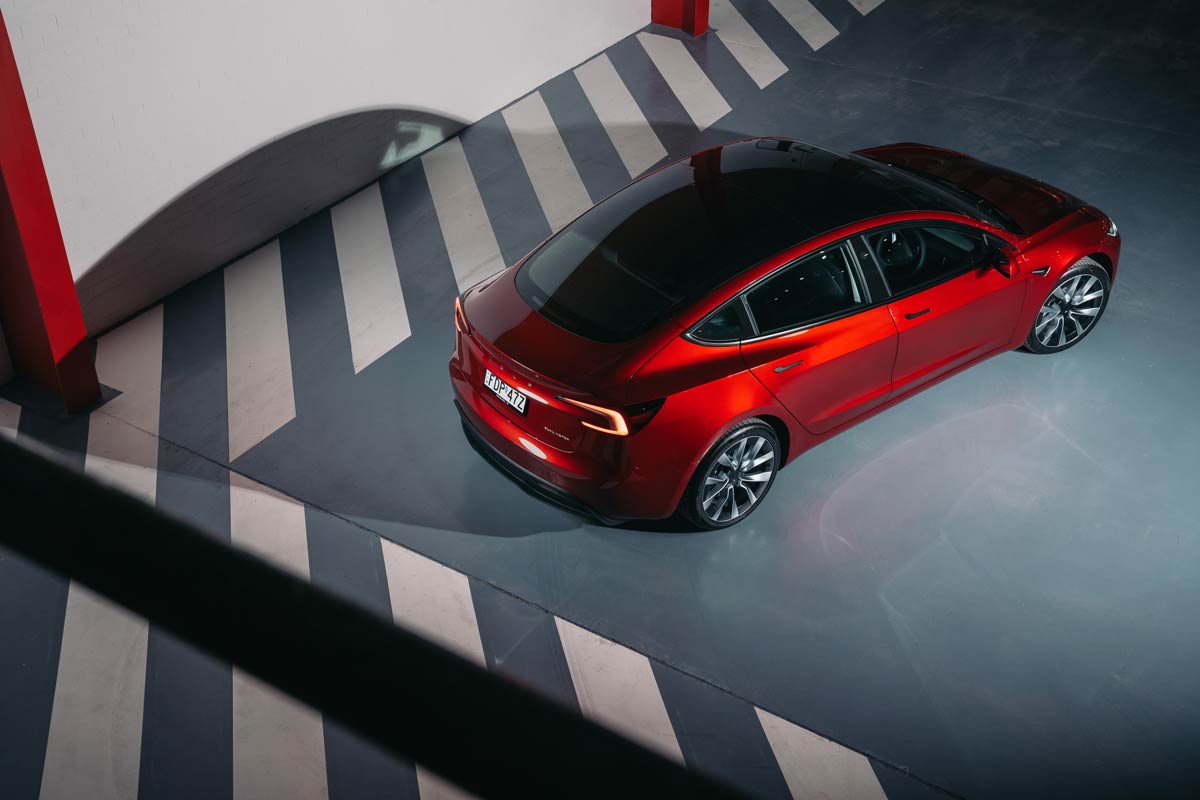
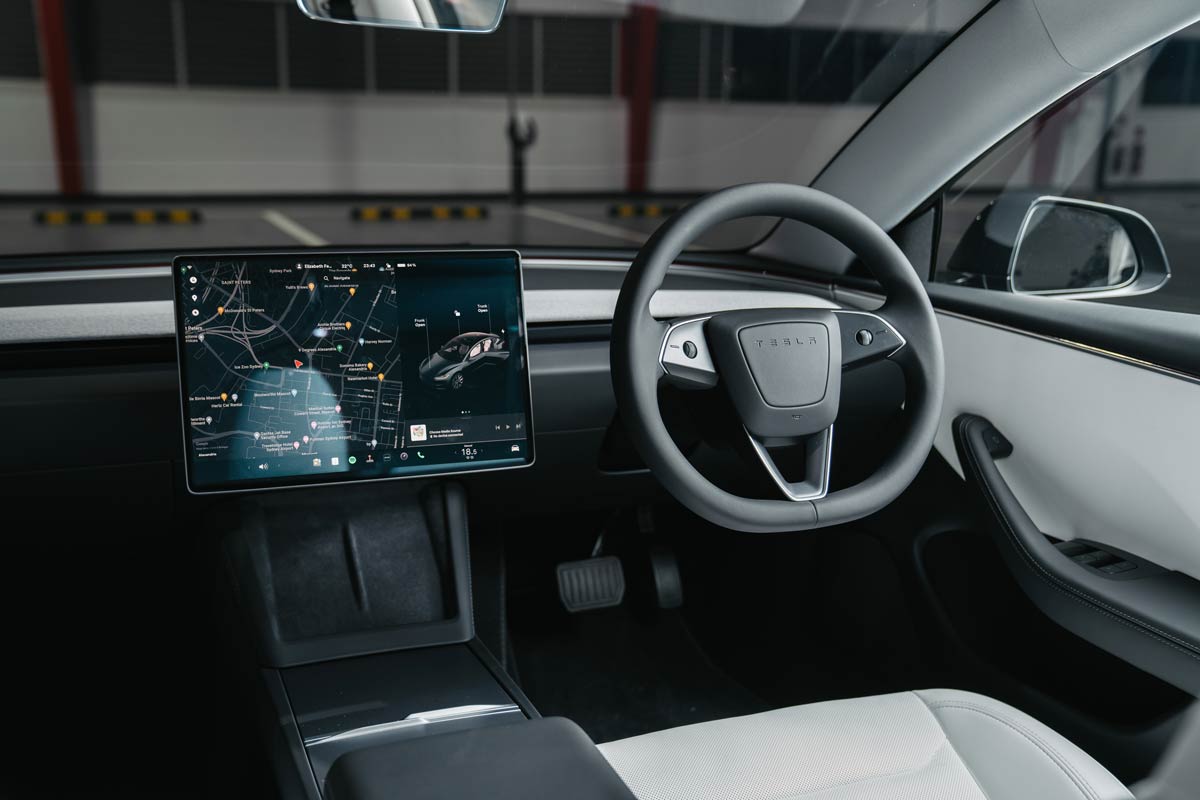
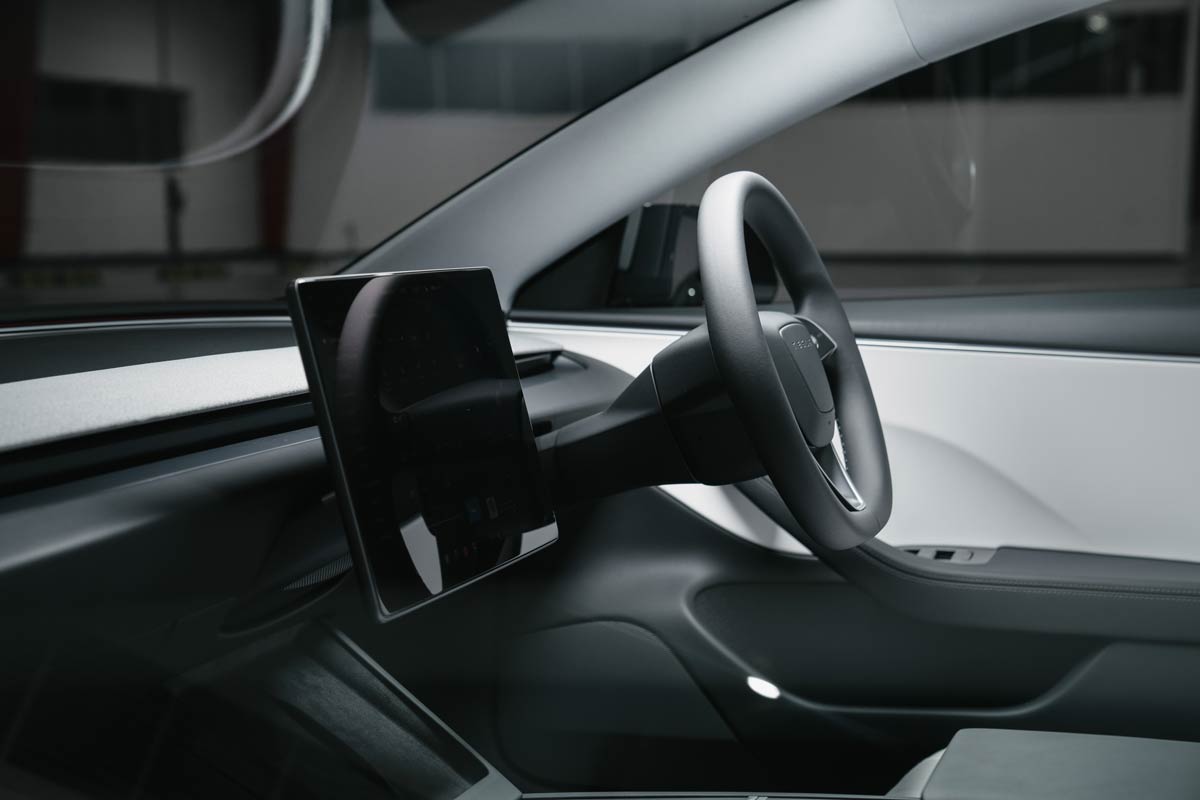
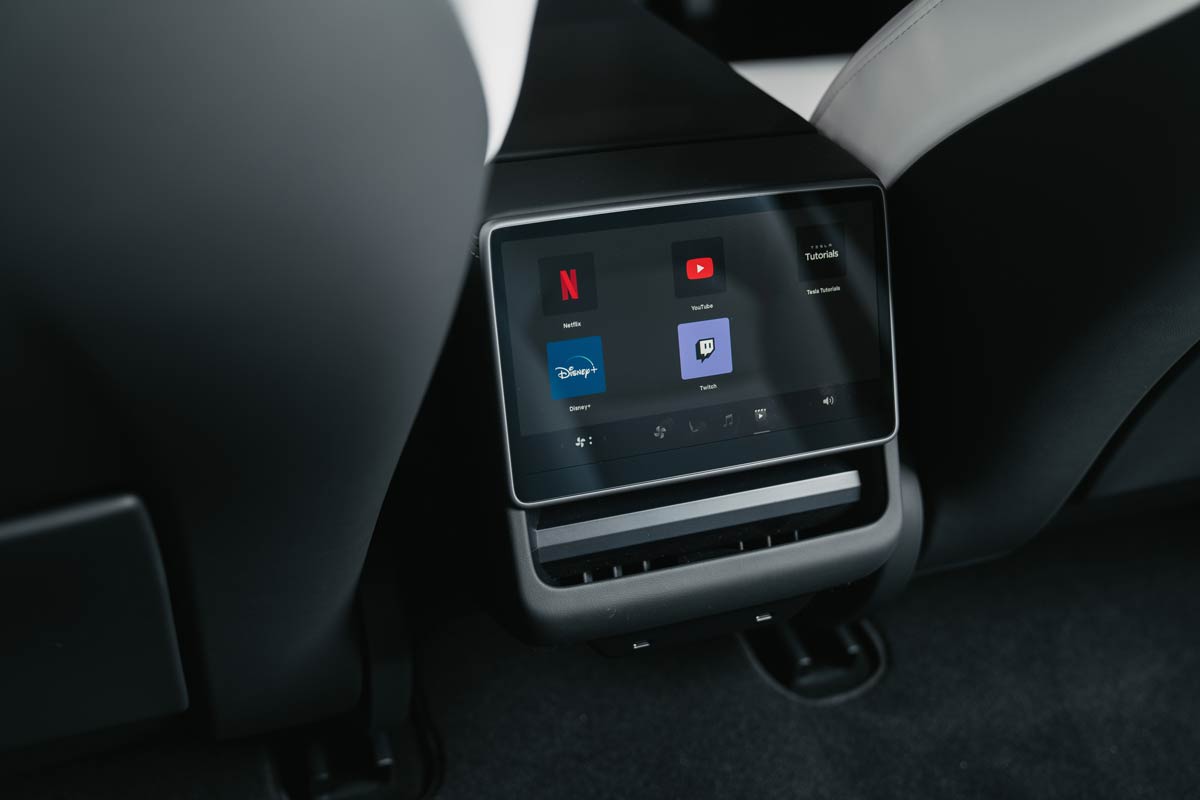
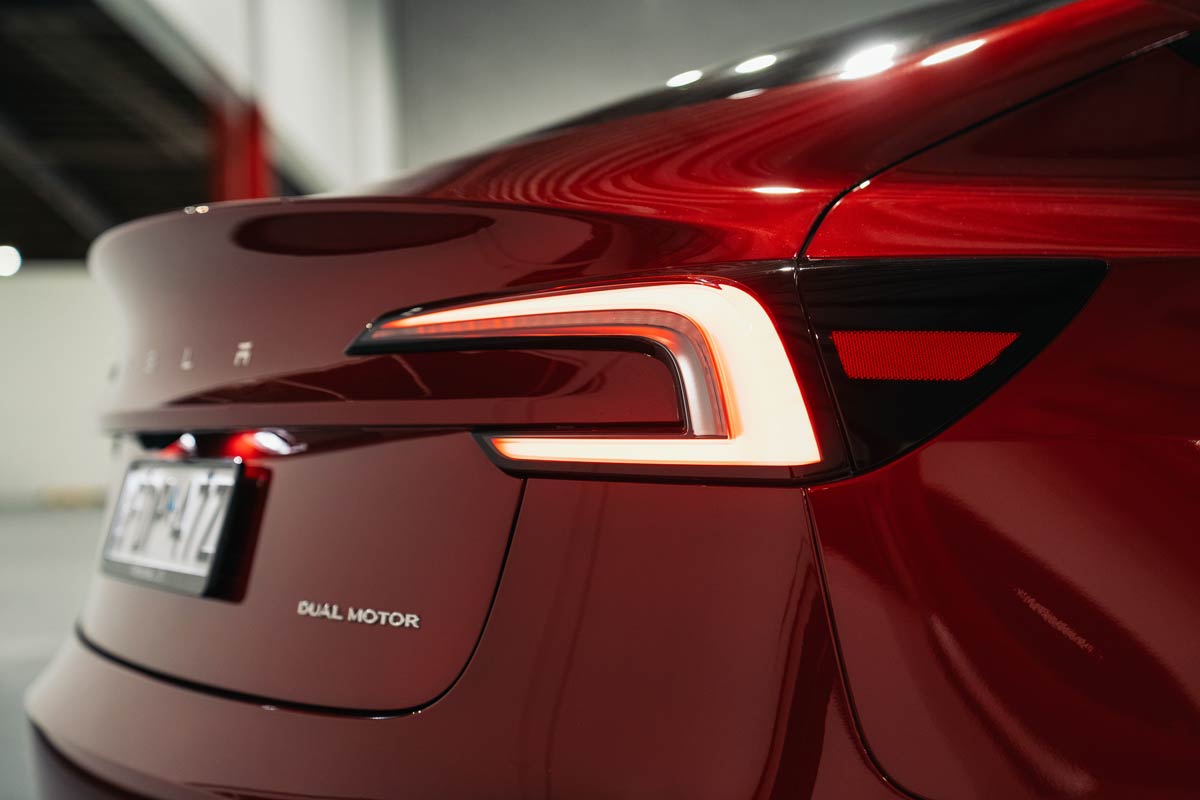
We’ll start where the focus has clearly been: refinement and comfort. The new Model 3 rides very well for its price point.
Bumps and noises are mostly soaked up before they reach occupants – something electric cars have to be extra adept at given there’s no engine adding vibration or drowning out other noises. While we don’t think the original Model 3 had especially poor NVH characteristics, there is a definite improvement in this area.
Tesla does not quote power or torque figures, but our RWD test car – with ballpark estimated outputs of 200kW and 340Nm – was more than ample, even with five occupants. One can only assume the AWD variant’s estimated 324kW and 493Nm would be approaching silly when it comes to acceleration. Steering weight and feel is good, however the regenerative braking may be a little aggressive for some.
The stalk-less design is less a step forward or backwards as it is one to the side.
New indicator buttons feel a little delicate for such frequented touch points and are located on the left side of the steering wheel – a strange choice for a right-hand drive market – often requiring a hand to come off the wheel or away from the touchscreen to engage. Furthermore, the Model 3 uses its camera system to determine when some turning manoeuvres have been completed. Moving two lanes over? The indicator will disengage after the car senses the first lane change, and will need re-engaging before the second.
Stalk-less gear selection is also a puzzling move, requiring a complete stop before drivers can drag a mini on-screen Model 3 forward or back to signify the direction they want to travel. The gesture requires focus to come off of the road and mirrors, and, while it might seem trivial, can add an annoying amount of time to multi-point turns. The stalk-less design, which originally presents as function, quickly becomes evident as purely form.
Tesla’s Model 3 is good – it always has been and probably always will be – and the 2024 updates have improved the offering in most ways.
However, with the continued use of now-six-year-old battery tech, the competition is catching up in on-paper specifications. The Model 3 once held the record for highest charge rate in Australia (at 250kW), but has now been overtaken by a raft of other EV models.
It’s possible the Model 3’s update and renewed focus on refinement has been to differentiate it from more budget market entries such as the BYD Seal. It’s also possible Tesla is pivoting the Model 3 towards a more premium market to make way for its upcoming small electric car. Time will tell.
Whatever Tesla’s thinking is, it has managed to further improve the model that helped it take the Australian EV market by storm, and that can’t be a bad thing.
Pros: Big step-up in cabin comfort; improved driving ranges; no more expense for the privilege
Cons: Exterior styling; carryover powertrain; stalk-less design can be a pain